-

-
-

-

-

-
Contact

High voltage apparatus contact
High-voltage circuit breakers, switchgear and transformer tap-breakers are typical applications that require copper-tungsten switch contact materials. One benefit of copper tungsten is that it exhibits a very low contact erosion rate. The refractory metal tungsten provides the necessary durability to withstand arc erosion, while the copper component provides high conductivity. Tungsten copper switch contact materials combine the excellent high temperature stability of tungsten with the high electrical and thermal conductivity properties of copper. Therefore, tungsten copper is an ideal material for arc erosion contacts in gas-insulated and air-insulated switchgear and high and medium voltage generator circuit breakers. The tungsten copper arc erosion contacts in the center of the arc chamber are subjected to extreme mechanical and thermal loads. The temperature during the arc can reach ≥ 2000 K. The vacuum infiltration method combines the tungsten copper part and the copper rod part. In this way, the elements of tungsten and copper diffuse each other, and the bonding strength of the two is very high. It will not crack under the action of high temperature arc, has a long service life, and does not require frequent maintenance.
Tungsten copper switch contact characteristics: tungsten copper switch contact has high density, high thermal conductivity, high strength and hardness, low resistivity, low thermal expansion coefficient, and resistance to arc burning, welding resistance, corrosion resistance characteristics, other electrical contact materials are difficult to match.
Electrical contact is located between the two conductors of a current-carrying connection point, it has the characteristics of disconnecting, mainly responsible for the current on, off and load tasks. The quality of the electrical contacts directly determines the overall reliability of the electrical system. Especially in modern large-scale power systems, communication systems and automatic control systems, because these systems contain tens of millions of contacts, if one or several contacts fail, it will seriously affect the work of the entire system, resulting in system disorder and even paralysis of the entire system. Therefore, the development of electrical contact materials has been rapidly developed in recent years. Due to the characteristics of high melting point, high density and low expansion coefficient of tungsten and the good thermal conductivity and electrical conductivity of copper, the electrical contact of tungsten-copper composite material has the advantages of good arc erosion resistance, welding resistance and high strength, these advantages make tungsten copper composite materials have been widely used in the fields of electric power, electronics, machinery and metallurgy since they appeared in the 1930 s, and have been used as electrical contacts for various high-voltage electrical switches for a long time.
The high pressure strength and electrical ablation resistance of tungsten copper alloy has become an important foundation to promote the continuous improvement of the voltage level and power of high-voltage electrical switches, and makes tungsten copper alloy an indispensable key material in high-voltage electrical switches. In the 1960 s, tungsten-copper composites were mainly used as electrodes for resistance welding and electrical processing, as well as high-temperature materials used in aerospace science and technology. Until after the reform and opening up, with the continuous improvement of the production process of tungsten copper materials and the continuous improvement of material quality, tungsten copper composite materials have been widely and maturely applied in the industrial field. In the 1990 s, the development of large-scale integrated circuits and high-power electronic devices made tungsten-copper composite materials as upgraded products began to be used in electronic packaging and heat sink materials on a large scale. Each new application and development of tungsten-copper composites puts forward new and higher requirements for their quality and performance, and the new preparation process of tungsten-copper composites has also been continuously promoted and developed.
In the use of high-voltage switch contacts, tungsten-copper composite contacts have been in existence for many years. In recent years, the vacuum high-voltage switch has been rapid development, at the same time, the vacuum high-voltage switch contact material requirements are relatively high, in addition to meet the basic performance of the general switch, based on the vacuum contact surface is very clean characteristics, making the vacuum high-voltage switch contact more easily welding, so the contact material is not only to have a higher resistance to welding, it is also necessary to have a sufficiently high voltage resistance, a cut-off current as low as possible and an extremely low gas content. These requirements and material characteristics make the vacuum high voltage switch contact materials focus on tungsten copper composite materials.

What if you have more needs?
Please leave your demand information and we will reply to you in time!
Luoyang Tongfang Technology Co., Ltd.

Mobile:+86-13503495123

Mobile:+86-13903792565

E-mail:lytongfangkeji@163.com

Address: Li Wan Xingguang Science Park, Gu County Town, Yanshi District, Henan Province
Copyright 2024 Luoyang Tongfang Technology Co., Ltd. This website supports ipv6


